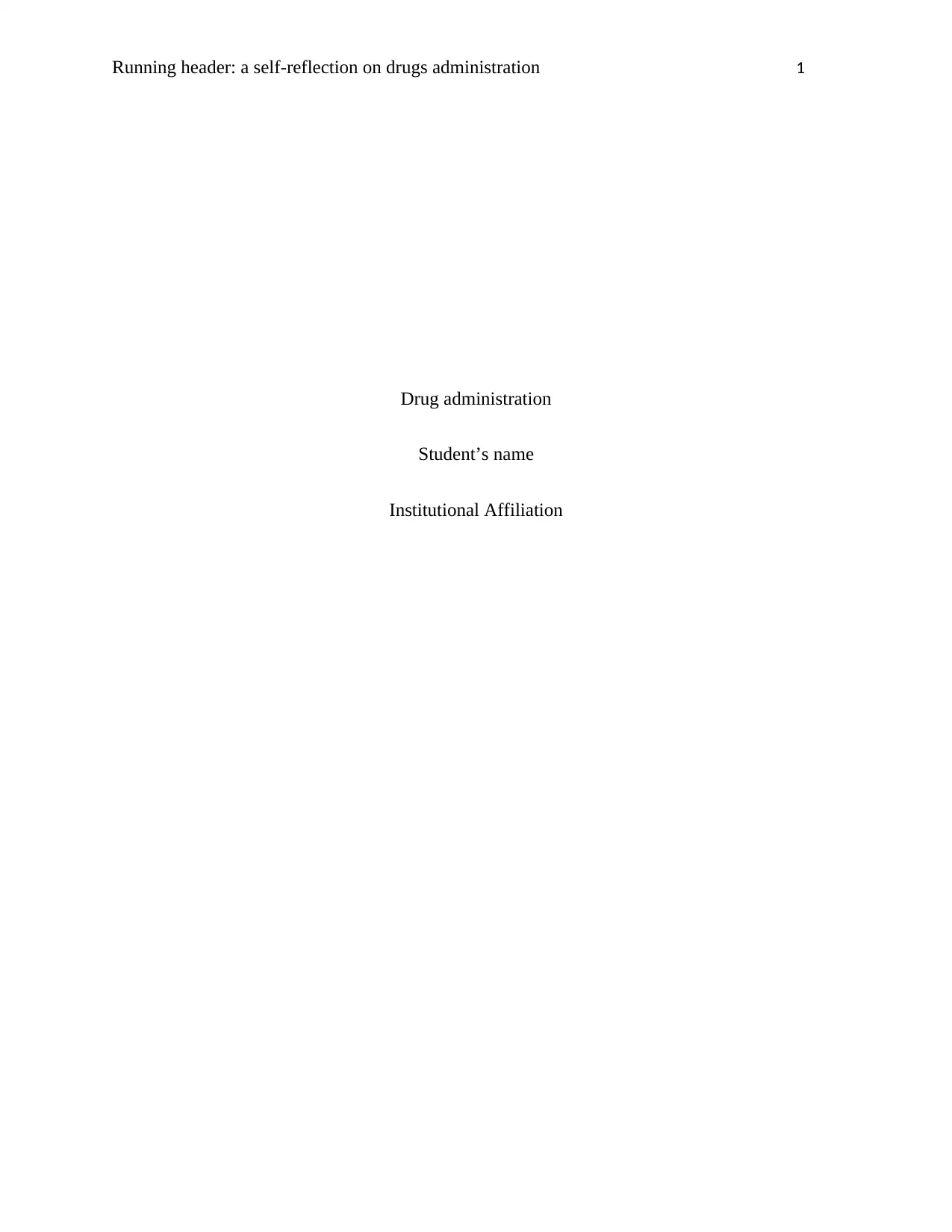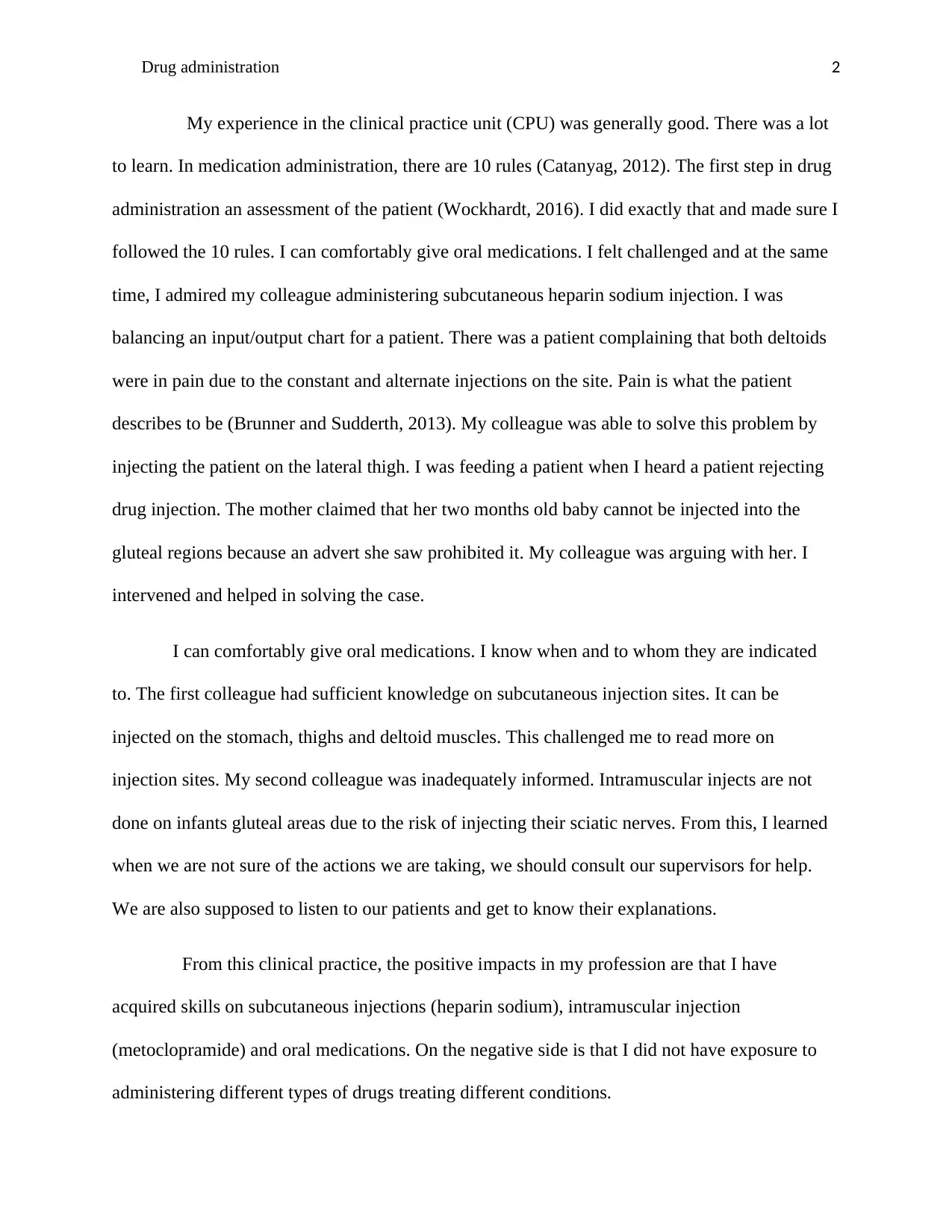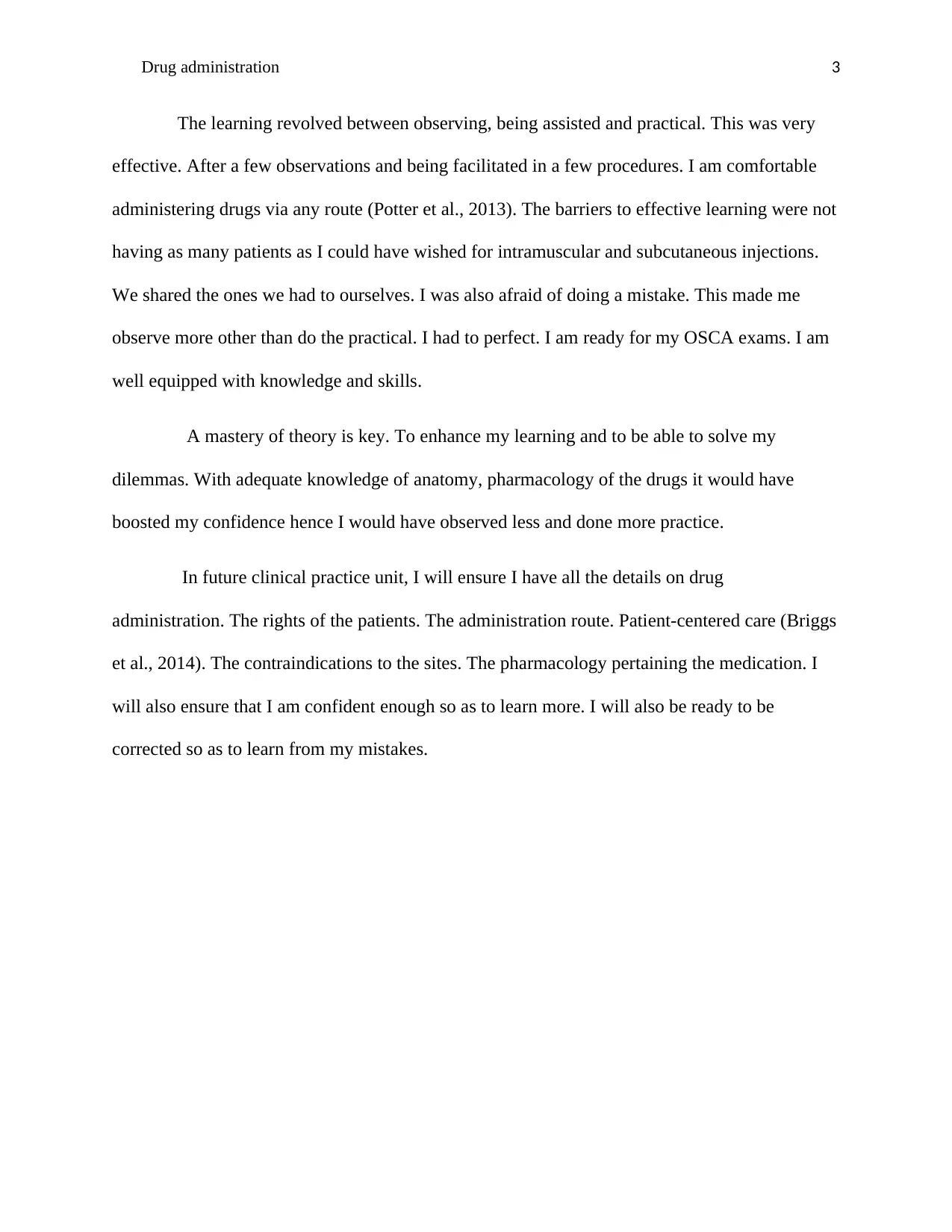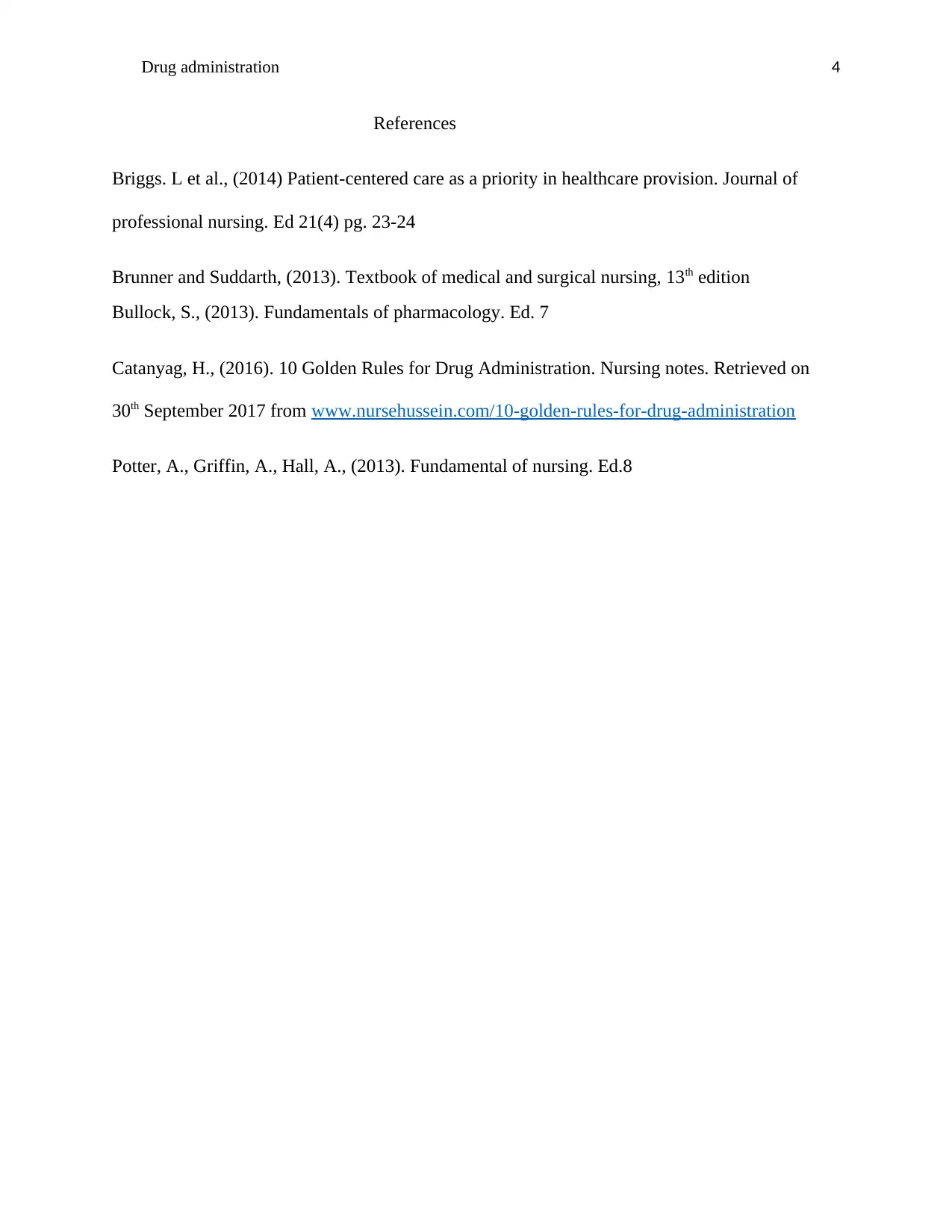University Nursing Program: Drug Administration Self-Reflection Report
VerifiedAdded on 2020/03/23
|4
|760
|419
Journal and Reflective Writing
AI Summary
This reflective essay details a nursing student's experience in a Clinical Practice Unit (CPU), focusing on drug administration. The student discusses their application of the "10 rules" of medication administration, including patient assessment and oral medication practices. The essay highlights challenges faced, such as dealing with patient pain and parental concerns regarding injections, and the student's interventions. The student reflects on the skills acquired, specifically in subcutaneous and intramuscular injections, and identifies areas for improvement, such as expanding knowledge of different drugs and their pharmacology. The reflection also covers the importance of patient-centered care, understanding contraindications, and the need for continuous learning and confidence-building. The student concludes by expressing readiness for OSCA exams and outlining plans for future clinical practice, emphasizing thorough preparation and a commitment to learning from mistakes.
1 out of 4











![[object Object]](/_next/static/media/star-bottom.7253800d.svg)